IMDRF/AE WG/N43FINAL:2020 (Edition 4) Terminologies for Categorized Adverse Event Reporting (AER) terms, terminology and codes - PDF (1.21Mb)
标准简介
Terminologies for Categorized Adverse Event Reporting (AER) terms, terminology and codes - PDF (1.21Mb)[附网盘链接]是IMDRF Adverse Event Terminology Working Group发布的GHTF标准,适用于世界范围。标准截图
![Terminologies for Categorized Adverse Event Reporting (AER) terms, terminology and codes - PDF (1.21Mb)[附网盘链接]](/img/20210914103522i7q9c.jpg)
标准文档说明
标准文档类型为Terminologies for Categorized Adverse Event Reporting (AER) terms, terminology and codes - PDF (1.21Mb)[附网盘链接]高清PDF版本(文字版),标准文档内可进行搜索,可以复制原文,可粘贴。标准部分原文
1. Introduction
This document has been prepared by the IMDRF Adverse Event Working Group, charged with
developing a harmonized terminology for reporting adverse events related to medical devices
including in-vitro diagnostics (IVDs).
Widespread use of a single, appropriate adverse event terminology and coding system is
expected to improve signal detection by adverse event management systems enabling a faster
response by both industry and regulatory authorities.
Use of defined terms as well as associated codes to describe problems encountered with
medical devices provides several benefits:
(1) it improves the accuracy of capturing and reporting of medical device related adverse
events;
(2) it reduces ambiguity and hence increases effectiveness of the evaluation process; and
(3) it is readily usable, in contrast to narrative text, for more sophisticated approaches to
signal detection (i.e. the identification of potential novel risks) and trending analysis by
incident management systems including advanced querying functions and data
visualization. Thus enabling a faster response by both regulatory authorities and device
manufacturers.
A globally harmonized terminology and associated codes also has the following benefits:
For manufacturers (including local distributors/authorized representatives): it
provides consistency for manufacturers reporting to multiple jurisdictions, reducing
the burden of managing multiple coding systems when preparing medical device
adverse event reports for multiple jurisdictions;
For regulatory authorities: by providing common terms and definitions, it supports
analysis of safety, quality and performance information in a manner that can readily
be shared globally: common terms will increase accuracy and reliability of
information exchanged about medical device adverse events between regulatory
authorities, and may facilitate more rapid detection of potential safety signals when
pooled at inter-regional levels;
For patients: it protects patients by enabling faster local and international
response to medical device adverse events including those related to medical device
malfunctions/deteriorations;
For healthcare providers: the use of common terms with manufacturers and
regulators may enhance accuracy, reliability and utility of the reports, especially when
larger datasets can be pooled and analyzed. It may also, provide terms and
definitions, some of which are within a hierarchical form, to be used for adverse event
reporting within or between healthcare facilities.
18 March 2020
Page 4 of 23
网盘链接
百度网盘:https://pan.baidu.com/s/1PqJJIePZ_Ag1ca0YZ6tpJw
提取码:6s2n
【温馨提示】大资料ISO是提供信息发布的专业信息类网站,所有内容均由用户发布,不代表本站观点,本站亦不存储所涉及的文件及资料。如有【免费资料】以及【付费资料】,请用户根据自己的需求,自行判断是否需要获取。如有交易诈骗、内容侵权可发送邮件至kf@dzl100.com,我们审查后若发现情况属实,会立即对相关内容进行删除处理。
加载用时:52.8133 毫秒
相关评论
相关文章
-

IMDRF/AE WG/N43FINAL:2020 (Edition 4) Terminologies for Categorized Adverse Event Reporting (AER) terms, terminology and codes - PDF (1.21Mb)
Terminologies for Categorized Adverse Event Reporting (AER) terms, terminology and codes - PDF (1.21Mb)[附网盘链接]是IMDRF Adverse Event Terminology Working Group于18 March 2020发布的GHTF标准,适用于世界范围。本次分享的标准文档为高清PDF(文字版),标准文档内可搜索,可复制,可粘贴。本文结尾附网盘链接。
-
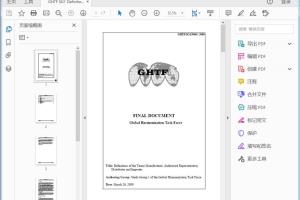
GHTF/SG1/N055: 2009 GHTF SG1 - Definition Terms - Manufacturer - Authorised Representative - Distributor and Importer - PDF (41kb)
GHTF SG1 - Definition Terms - Manufacturer - Authorised Representative - Distributor and Importer - PDF (41kb)[附网盘链接]是Study Group 1 of the Global Harmonization Task Force于March 26, 2009发布的GHTF标准,适用于世界范围。本次分享的标准文档为高清PDF(文字版),标准文档内可搜索,可复制,可粘贴。本文结尾附网盘链接。
-
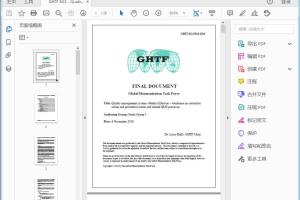
GHTF/SG3/N18:2010 GHTF SG3 - Quality management system - Medical Devices - Guidance on corrective action and preventive action and related QMS processes - November 2010 - PDF (254kb)
GHTF SG3 - Quality management system - Medical Devices - Guidance on corrective action and preventive action and related QMS processes - November 2010 - PDF (254kb)[附网盘链接]是Study Group 3于4 November 2010发布的GHTF标准,适用于世界。本次分享的标准文档为高清PDF(文字版),标准文档内可搜索,可复制,可粘贴。本文结尾附网盘链接。
-
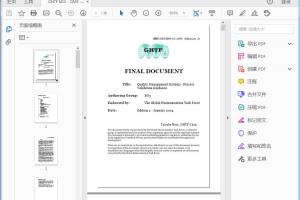
GHTF/SG3/N99-10:2004 (Edition 2) GHTF SG3 - QMS - Process Validation Guidance - January 2004 - PDF (162kb)
GHTF SG3 - QMS - Process Validation Guidance - January 2004 - PDF (162kb)[附网盘链接]是SG3于Edition 2 - January 2004发布的GHTF标准,适用于世界。本次分享的标准文档为高清PDF(文字版),标准文档内可搜索,可复制,可粘贴。本文结尾附网盘链接。
-
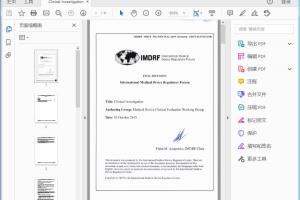
IMDRF MDCE WG/N57FINAL:2019 (formerly GHTF/SG5/N3:2010) Clinical Investigation - PDF (267kb)
Clinical Investigation - PDF (267kb)[附网盘链接]是Medical Device Clinical Evaluation Working Group于10 October 2019发布的GHTF标准,适用于全球范围。本次分享的标准文档为高清PDF(文字版),标准文档内可搜索,可复制,可粘贴。本文结尾附网盘链接。
-
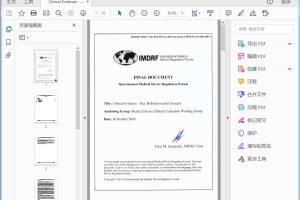
IMDRF MDCE WG/N55 FINAL:2019 (formerly GHTF/SG5/N1R8:2007) Clinical Evidence - Key Definitions and Concepts - PDF (185kb)
Clinical Evidence - Key Definitions and Concepts - PDF (185kb)[附网盘链接]是Medical Device Clinical Evaluation Working Group于10 October 2019发布的GHTF标准,适用于世界。本次分享的标准文档为高清PDF(文字版),标准文档内可搜索,可复制,可粘贴。本文结尾附网盘链接。
-
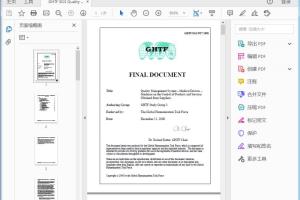
GHTF/SG3/N17:2008 GHTF SG3 - Quality Management System - Medical Devices - Guidance on the Control of Products and Services Obtained from Suppliers - December 2008 - PDF (593kb)
GHTF SG3 - Quality Management System - Medical Devices - Guidance on the Control of Products and Services Obtained from Suppliers - December 2008 - PDF (593kb)[附网盘链接]是GHTF Study Group 3于December 11, 2008发布的GHTF标准,适用于全球范围。本次分享的标准文档为高清PDF(文字版),标准文档内可搜索,可复制,可粘贴。本文结尾附网盘链接。
-

GHTF/SG1/N071:2012 GHTF SG1 - Definition of Terms Medical Device and In Vitro Diagnostic Medical Device - May 2012 - PDF (240kb)
GHTF SG1 - Definition of Terms Medical Device and In Vitro Diagnostic Medical Device - May 2012 - PDF (240kb)[附网盘链接]是Study Group 1 of the Global Harmonization Task Force于May 16 , 2012发布的GHTF标准,适用于世界。本次分享的标准文档为高清PDF(文字版),标准文档内可搜索,可复制,可粘贴。本文结尾附网盘链接。
-
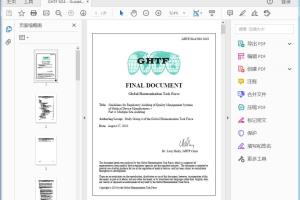
GHTF/SG4/N83:2010 GHTF SG4 - Guidelines for Regulatory Auditing of Quality Management Systems of Medical Device Manufacturers - Part 4 Multiple Site Auditing - August 2010 - PDF (157kb)
GHTF SG4 - Guidelines for Regulatory Auditing of Quality Management Systems of Medical Device Manufacturers - Part 4 Multiple Site Auditing - August 2010 - PDF (157kb)[附网盘链接]是Study Group 4 of the Global Harmonization Task Force于August 27, 2010发布的GHTF标准,适用于全球。本次分享的标准文档为高清PDF(文字版),标准文档内可搜索,可复制,可粘贴。本文结尾附网盘链接。
-

IMDRF/GRRP WG/N47 FINAL:2018 Essential Principles of Safety and Performance of Medical Devices and IVD Medical Devices - PDF (260kb)
Essential Principles of Safety and Performance of Medical Devices and IVD Medical Devices - PDF (260kb)[附网盘链接]是IMDRF Good Regulatory Review Practices Group于31 October 2018发布的GHTF标准,适用于世界。本次分享的标准文档为高清PDF(文字版),标准文档内可搜索,可复制,可粘贴。本文结尾附网盘链接。
-
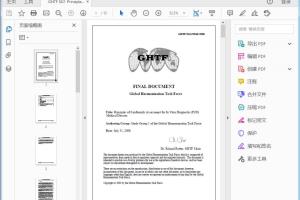
GHTF/SG1/N046:2008 GHTF SG1 - Principles of CA for IVD Medical Devices - July 2008 - PDF (87kb)
GHTF SG1 - Principles of CA for IVD Medical Devices - July 2008 - PDF (87kb)[附网盘链接]是Study Group 1 of the Global Harmonization Task Force于July 31, 2008发布的GHTF标准,适用于全球范围。本次分享的标准文档为高清PDF(文字版),标准文档内可搜索,可复制,可粘贴。本文结尾附网盘链接。
-

GHTF/SG2/N79R11:2009 GHTF SG2 - Medical Devices Post Market Surveillance - February 2009 - PDF (142kb)
GHTF SG2 - Medical Devices Post Market Surveillance - February 2009 - PDF (142kb)[附网盘链接]是Study Group 2于February 17, 2009发布的GHTF标准,适用于世界。本次分享的标准文档为高清PDF(文字版),标准文档内可搜索,可复制,可粘贴。本文结尾附网盘链接。
-
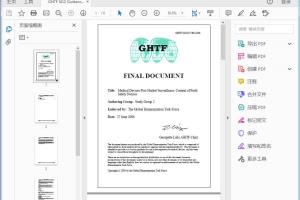
GHTF/SG2/N57R8:2006 GHTF SG2 - Guidance - Content of Field Safety Notices - PDF (58kb)
GHTF SG2 - Guidance - Content of Field Safety Notices - PDF (58kb)[附网盘链接]是Study Group 2于27 June 2006发布的GHTF标准,适用于全球。本次分享的标准文档为高清PDF(文字版),标准文档内可搜索,可复制,可粘贴。本文结尾附网盘链接。
-
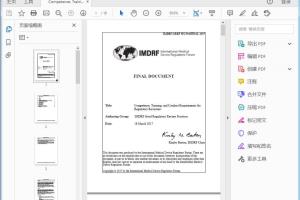
IMDRF/GRRP WG/N40FINAL:2017 Competence, Training, and Conduct Requirements for Regulatory Reviewers - PDF (174kb)
Competence, Training, and Conduct Requirements for Regulatory Reviewers - PDF (174kb)[附网盘链接]是IMDRF Good Regulatory Review Practices于16 March 2017发布的GHTF标准,适用于全球。本次分享的标准文档为高清PDF(文字版),标准文档内可搜索,可复制,可粘贴。本文结尾附网盘链接。
-
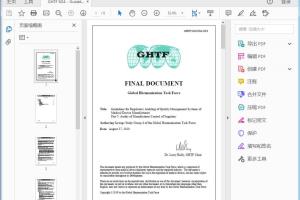
GHTF/SG4/N84:2010 GHTF SG4 - Guidelines for Regulatory Auditing of Quality Management Systems of Medical Device Manufacturers. Part 5 Audits of Manufacturer Control of Suppliers - August 2012 - PDF (96kb)
GHTF SG4 - Guidelines for Regulatory Auditing of Quality Management Systems of Medical Device Manufacturers. Part 5 Audits of Manufacturer Control of Suppliers - August 2012 - PDF (96kb)[附网盘链接]是Study Group 4 of the Global Harmonization Task Force于August 27, 2010发布的GHTF标准,适用于世界范围。本次分享的标准文档为高清PDF(文字版),标准文档内可搜索,可复制,可粘贴。本文结尾附网盘链接。